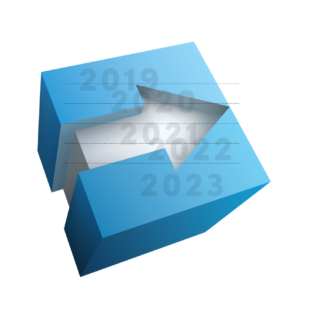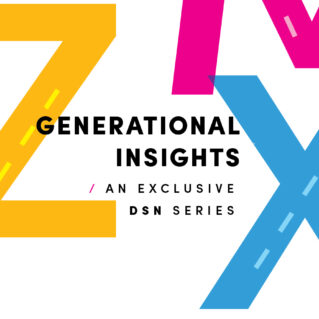Disruption is coming. How nimble is your company to weather the inevitable storm?
Ten years ago, when we needed a ride, we called a cab by default. Then came Uber and Lyft, to the dismay of taxi drivers. Twenty years ago, when we wanted to buy new clothes, we drove to the mall. Then came Amazon, forever changing the fates of brick-and-mortar stores and shipping carriers. Oh, what a difference disruption makes.
Technological disruption isn’t new, but it’s accelerating. Consider that it took about 80 years for Americans to adapt to the dishwasher. Yet the consumer internet became commonplace in less than a decade.
Another example of how disruption is changing the landscape of the marketplace is China. Currently, China is home to nine of the world’s 20 biggest internet companies by market cap while the U.S. has eleven. Five years ago, China had two and the U.S. had nine.
These are some of the key insights revealed by venture capitalist Mary Meeker, who released her highly anticipated Internet Trends report in May 2018. The slide deck is crammed with timely tech stats and upcoming trends. The message is: Disruption isn’t done.

Agility vs. Stability
In today’s market, agility is what’s now. Agility is the ability of a company to react to changing market forces. What about stability? Isn’t that a critical component of business success?
The experts of our time say you need both agility and stability today. Truly agile organizations are both stable and dynamic at the same time.
Take the smartphone. It has a fixed hardware platform that basically doesn’t change. But it also contains space for new and ever-changing apps. Just like the agile company that possesses a stable backbone with the dynamic capability to change in the face of disruption.
Even if you’re now an established industry leader—even if fortune has clearly favored you—remember that fewer than 10 percent of the non-financial S&P 500 companies in 1983 remained in the S&P 500 in 2013.
A 2018 article from McKinsey & Company, The Five Trademarks of Agile Companies, says we are moving from an “organization as machine” model to a new business paradigm of “organization as organism.” The agile company is dawning as the new dominant organizational paradigm. Rather than organization as machine, the agile organization is a living organism.
A machine is inflexible, unmoving, bureaucratic. A living organism is nimble and quick on its feet. It adapts to the environment quickly. If companies want to stay successful, they must act with agility.
History is Our Best Teacher
How agile is your organization? What if the equivalent of Uber came your way? Would your company be quick enough to respond to the market headwinds?
| Lean Business Model Benefits Whether your company is a small startup, mid-size or legacy direct selling leader, your business will benefit from a lean philosophy in the short- and long-term. Here are just a few of the benefits of operating from this business paradigm. Engaged Employees Business Growth Customer Focus |
Businesses large and small would do well to heed the history lessons of their predecessors, suggests Baba Prasad, CEO of the Vivékin Group and author of Nimble: Make Yourself and Your Company Resilient in the Age of Constant Change.
Companies like Digital Equipment and Ericsson were once considered leaders in the marketplace—sure bets. But they failed because they could not think and act differently from what they had always done.
“DEC, or Digital Equipment Corp., is an example of how companies can just die even if they’re huge,” Prasad says in a podcast. “It was a $14 billion company in the early 1990s, with offices in 95 countries. But in a matter of six to seven years it folded, because it didn’t anticipate the emergence of the microcomputer. Compaq ultimately bought it.”
DEC is a classic example of a company that was not nimble, he says. “If you don’t have an agile approach, you die,” Prasad adds. “Many companies have folded when they didn’t have agility.”
Ryan Napierski, President of Nu Skin, touched on this during his speech at the DSA Annual Meeting last month. “The way we build our organizations… if we are not flexible, if we are used to working in waterfall type orientations, we can’t move as quickly as we need to move and compete in today’s world,” he says. “The ideal organization regardless of size has to be nimble and have the ability to pivot as the market changes.”
What You Can Do Now
Is there anything you can do right now to prepare for disruptive times ahead? How can you make your company more lean and mean and agile, readier to adapt to change?
Being agile and lean doesn’t mean a reduction in staff—it’s about how your organization operates as a whole. Are your people empowered to make decisions without you? Can third-party supplier partners help take some of the load off of you in some respects?
It’s about engaging your employees in the effort to stay agile, lean and profitable. Are you empowering them in making decisions to be a part of the solution? One of our industry’s own is doing just that.
In May 2018, Young Living announced it would be incentivizing its employees with a new employee profit-sharing program as part of its plan to become a $2 billion company this year. The company hopes the new plan will also help them reach other goals that tie in with agility—such as cultivating their culture and attracting top talent.
The point is to think of ways to get employees to “think like a CEO,” so they will be motivated to go the extra mile and take responsibility for helping you stay agile and profitable. It takes everyone working together.
In today’s times, all businesses—from legacy companies to startups—should perform a self-assessment to determine where they are on the agility scale. If you haven’t thought about this in a while, now is a good time to reflect on the question all companies must answer.
Is your organization agile enough to weather the coming disruption storm? It’s a question you should reflect on and ultimately answer.


